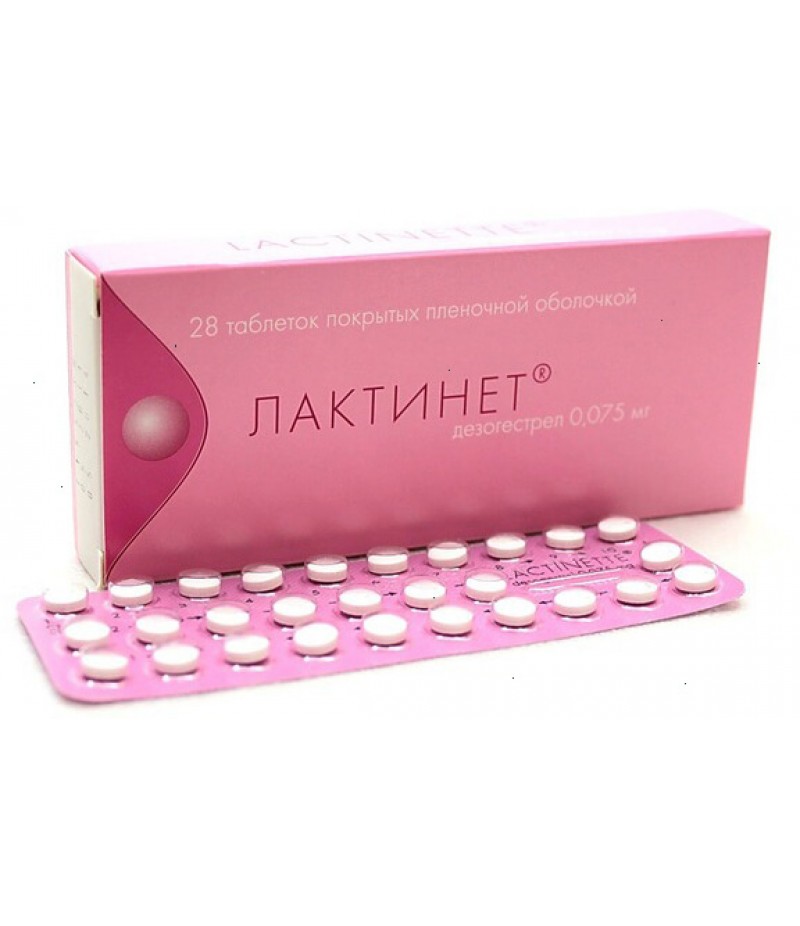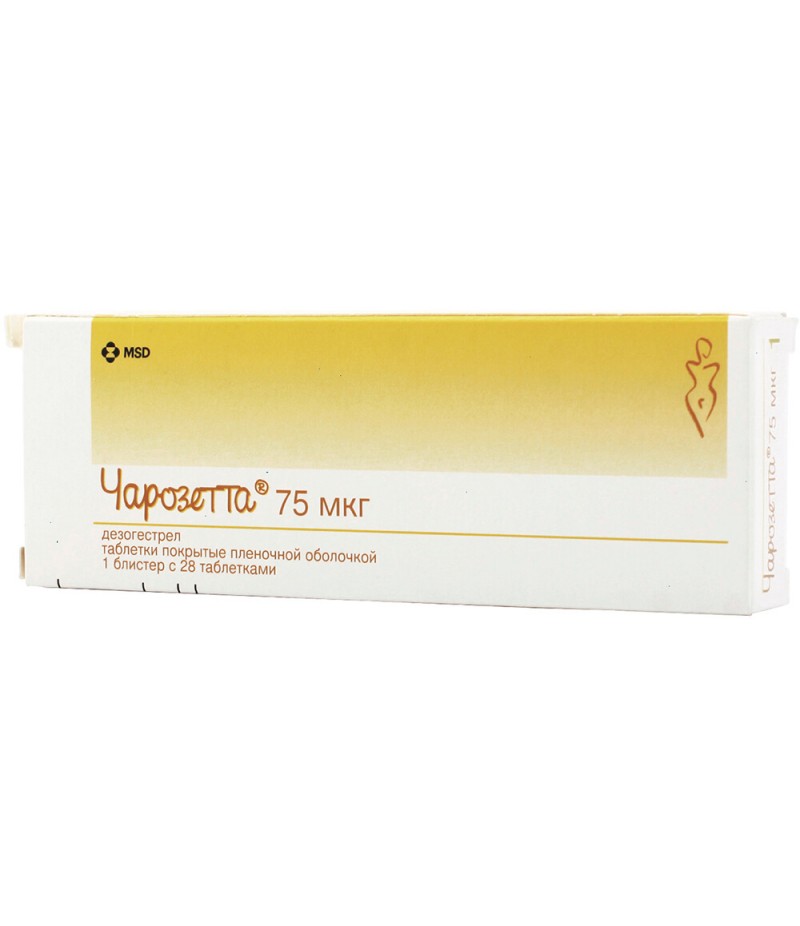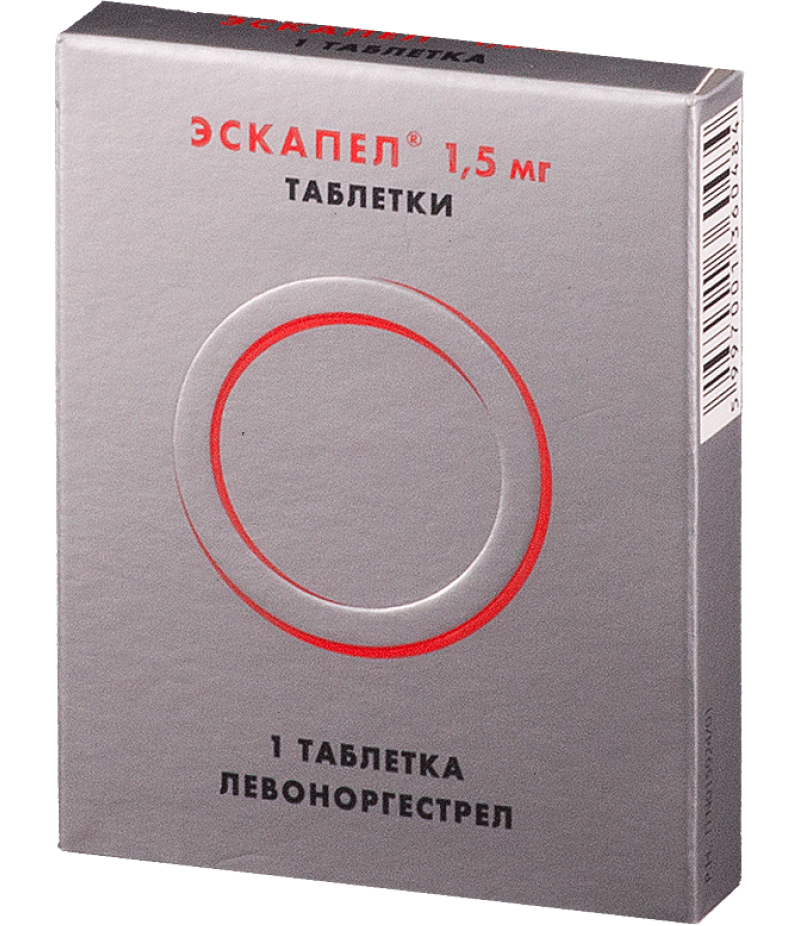Lactinette tabs 75mcg #28
- $41.99
- 2 or more $40.90
- 3 or more $39.99
- Availability:In Stock
Instruction for LactinetteReed more and buy Lactinette on this pageCompositionIn one tablet of the drug Lactinette contains 0,075 μg of desogestrel and a number of auxiliary components: silicon dioxide colloid (S..
Tags: tabs
Instruction for Lactinette
Reed more and buy Lactinette on this page
Composition
In one tablet of the drug Lactinette contains 0,075 μg of desogestrel and a number of auxiliary components:
silicon dioxide colloid (Silicii dioxydum colloidale);
D, L-α-tocopherol (dl-alfa-Tocopherol);
stearic acid (Acidum stearicum);
magnesium stearate;
Povidone K30 (Povidonum K30);
potato starch (Amylum solani);
lactose monohydrate.
In the film coating, which is covered with tablets, there are:
talc (Talcum);
macrogol 3000 (Macrogolum 3000);
titanium dioxide CI 77891 (Titanium Dioxide);
Opapray II white (Opadry II White);
polyvinyl alcohol (Spiritus polyvinylicus).
Form of issue
Lactinette is available in the form of biconvex, film-coated tablets of round shape, a color that can range from almost white to white. On one side of the tablet there is an engraving in the form of the letter "D", with the other engraved the number "75".
Tablets are packed in blisters for 28 pieces. In one cardboard box there can be one or at the same time three blisters.
pharmachologic effect
Lactinette belongs to the pharmacological group of monophasic gestagen-containing contraceptives intended for oral administration in order to prevent the onset of pregnancy.
Pharmacodynamics and pharmacokinetics
Covered with a film-coated contraceptive pill Lactinette is a contraceptive, based on the progestogen of the third generation of desogestrel.
A high degree of affinity for progesterone receptors provides reliable contraception even when used in low doses. Its main advantage lies in the fact that it has practically no effect on the lipid spectrum of the blood. It also does not affect the carbohydrate metabolism and hemostatic parameters.
These useful qualities of desogestrel are the key to safety (given the contraindications to their use) of modern low-dose oral contraceptives, which include Lactinette.
Since other hormonal components other than progestogen are not used as an active ingredient, Lactinette tablets are safe for women breastfeeding, as well as for women who have contraindications or who do not want to take estrogen-containing drugs.
The mechanism of action of desogestrel is due to inhibition of ovulation, which is confirmed by the absence of the follicle during the procedure of ultrasound diagnosis, as well as the indices of low content in the body of luteotropic (lactogenic) hormone.
The efficacy of desogestrel also confirms the low concentration of progesterone in the middle of the menstrual cycle.
Another no less important property of the substance is the ability to increase the density and viscosity of cervical mucus, which is produced by the glands of the cervix. This, in turn, creates a barrier to the passage of spermatozoa and prevents the fertilization of the egg.
The Perl index for the drug is 0.4. This indicator reflects the number of pregnancies in a group of thousands of women during the year without the use of contraceptives, as well as the level of reliability of the contraceptive method. The lower it is, the more effective the contraceptive is.
With respect to Lactinette, the Pearl index is similar to the indicator established for contraceptives of a combined type.
Comparative study data showed that when taking missed tablets after a maximum of three hours after the proper time, in the group of women taking the drug, the value of Pearl's index remained unchanged - 0.4. The Perl index for levonorgestrel increased to 1.6.
After taking per os tablets, Lactinette desogestrel is rapidly absorbed in the stomach and intestines. The average maximum concentration of the substance in the circulating blood is then noted after 1.8 to 2 hours. The bioavailability index is within 70%.
Under the influence of enzymes, desogestrel undergoes hydroxylation and dehydrogenation processes, as a result of which it is biotransformed to ethonogestrel, which is its main metabolite. Further metabolization of etonogestrel is completed by the formation of glucuronide and sulfate conjugates.
Ethonogestrel, which is the most active metabolite of desogestrel, has the ability to bind to plasma proteins by 95.5-99%. To a greater extent, this applies to albumins, to slightly smaller ones - globular proteins (globulins) responsible for binding of sex hormones.
On average, the half-life of metabolites of desogestrel is approximately 30 hours. And its duration does not change, depending on whether the drug was taken once or course (multiple).
The equilibrium concentration is noted after 4-5 days after the start of taking the tablets.
Derivation of metabolites in the form of conjugates and free steroid hormones is mainly carried out by the kidneys with urine. To a much lesser extent, they are derived from the contents of the intestine.
In breast-feeding women, etonogestrel falls into milk. The ratio of milk / blood plasma at the same time is 0.37 / 0.55. This, as well as the fact that a child on average receives about 150 ml of breast milk per day for each kilogram of his weight, he can get with him and 0.01 to 0.05 mkg of etonogestrel.
Indications for use
Lactinette is indicated as a contraceptive for women who want to prevent an unplanned pregnancy.
Contraindications
Contraindications to the prescription of the drug are:
thromboembolism (history or current);
severe liver diseases (contraindication persists until the liver function is normalized);
impaired function, as well as liver failure;
the presence or assumption of a hormone-dependent malignant neoplasm in the patient;
vaginal discharge from an unclear origin;
pregnancy or suspected of it;
intolerance to lactose;
lactase insufficiency;
malabsorption of glucose-galactose;
forced immobilization over a long period of time;
hypersensitivity to the active substance or any of the auxiliary components.
Side effects
Studies of the drug Lactinette and its active substance showed that the most frequent adverse reaction to taking the drug is a violation of the regularity of the menstrual cycle.
Approximately half of the women taking the drug have noncyclic bloody vaginal discharge. Every third or fifth woman on a background of taking pills, menstruation becomes more rare (up to the point that eventually disappear completely) or, on the contrary, they become more frequent.
In some cases, there may be an increase in the duration of menstrual bleeding. However, as a rule, after two months of taking menstruation become less frequent.
To increase the level of safety and reduce the risk of side effects, it is recommended that a woman receiving Lactinette regularly visit her gynecologist, tell him about all changes in her condition, and keep a diary of menstrual flow.
To the category of the most frequently occurring on the background of reception of gestagen-containing oral contraceptives are:
bouts of nausea;
the appearance of acne;
mood lability;
decreased sexual desire;
soreness in the mammary glands;
weight gain;
headache.
A few are noted less often:
increased fatigue;
vomiting;
hair loss (alopecia);
increased intracranial pressure;
inflammatory processes of the vaginal mucosa;
cystic formations in the ovaries;
infectious diseases of the vagina;
increased severity of pain in the lower abdomen during menstrual bleeding.
Rarely, such phenomena as skin rashes, nodosa erythema, reddening of the skin, urticaria can occur. Some women may have a discharge from the mammary glands. In rare cases, an ectopic pregnancy is recorded.
The intake of Lactinette may become a provoking factor for the development or increase in the degree of angioedema, as well as for its aggravation, if the latter is congenital.
There are cases when women who took oral contraceptives had more serious consequences. These include the formation of hormone-dependent cancers and the development of thromboembolism (venous or arterial).
Instructions for the use of Lactinette: the method of taking and dosing the drug
If a woman does not drink any oral contraceptives before starting the use of Lactinette, tablets are taken from the first day of the cycle. The daily dose of the drug is 1 tablet.
In this case, it is recommended to take it clearly at the same time, maintaining an interval of 24 hours and following the instructions on the package. When taking Lactinette it is not necessary to make intervals between every two courses.
If previously a woman did not use hormonal contraception (at least the previous month), taking the tablets begin at the first after the end of menstrual bleeding day. Auxiliary barrier means of contraception are not needed.
If the drug is taken between 2 and 5 days after the end of menstrual bleeding, in this case, the contraceptive pill is supplemented with barrier contraceptives.
If it is necessary to replace another combined contraceptive with Lactinette, it is recommended to do this the next day after the withdrawal of the previously used remedy. The need for additional protection is not available.
If it is necessary to replace another monocomponent progestogen-containing preparation with Lactinette, the taking of tablets also begins immediately after the abolition of the previously used remedy, whether minipills, progestogen-containing injections, intrauterine contraceptives or implants.
In each of the cases during the first week for greater contraceptive reliability, the use of barrier contraceptives should be used along with tablets.
After the abortion procedure, as well as after a spontaneous abortion in the first three months of pregnancy, it is recommended to start taking the drug immediately after the termination of pregnancy. There is no need for additional methods of contraception.
After the termination of pregnancy between 13 and 24 weeks, as well as after childbirth, Lactinette intake is prescribed no earlier than 21-28 days. If you plan to start the course later, then in the first seven days the tablets are combined with the use of barrier contraceptives.
In situations where unprotected sexual relations have taken place before the start of the course of taking the drug, a woman is advised to exclude the possibility of pregnancy or it is suggested to displace the first day of the use of tablets on the first day of the next menstrual cycle.
If the previous pill intake was missed, but less than twelve hours have passed, the contraceptive effect of the drug remains unchanged, further administration is continued in accordance with the usual scheme, without using additional methods of protection from unwanted pregnancy.
If passed from twelve hours to three days, the reliability of contraception decreases significantly. The drug continues to take on the usual pattern, however, supplement it using other methods of contraception.
If vomiting begins several hours after taking the pill, this is an indication that the drug has not completely absorbed the active substance. In this case, the instruction for Lactinette recommends resorting to countermeasures similar to those resorted to if the next reception was missed. To fill the missing pill, it is taken from the next package of the drug.
If menstrual irregularities are noted against the background of taking the tablets (for example, too frequent, prolonged, painful or irregular bleeding), you should consider the option of replacing the drug. If the symptomatology does not disappear after this, a thorough examination is necessary to establish the exact cause of its appearance.
In some cases, amenorrhoea and other cycle disorders may result from improper administration of the drug.
In case of pregnancy, the Lactinette is immediately stopped.
Overdose
When the recommended dose is exceeded, the dose of the drug may be:
vomiting;
nausea;
bloody discharge or heavy bleeding from the vagina.
When any of these signs appear, symptomatic treatment is prescribed. The drug has no specific antidote.
Interaction
Simultaneous reception with drugs that induce microsomal hepatic enzymes can cause breakthrough bleeding and reduce the contraceptive effect of Lactinette.
Such medicines include hydantoin derivatives:
phenytoin;
carbamazepine;
topiramate;
griseofulfin;
rifabutin;
barbiturates;
primondon oxcarbazepine.
If necessary, to take a course of treatment with these drugs, a woman is recommended to supplement the intake of contraceptive pills with the use of additional contraceptives throughout the course of treatment and for another seven days after the end of treatment. After stopping rifampicin, use barrier contraceptives is recommended for another 28 days.
The contraceptive effect of Lactinette is reduced by the simultaneous use of antibiotics with it, as well as by treatment with activated carbon and similar preparations with it.
After taking activated charcoal or an analogue of it, one should follow the recommendations regarding the dosage of the drug when the tablet is not taken.
Storage conditions
The preparation should be stored in its original packaging at a temperature not exceeding 25 ° C.
Shelf life - 3 years.
Application of Lactinette in breastfeeding and pregnancy
The use of Lactinette by pregnant women is prohibited. This is due to the results of preclinical studies showing that high doses of progestogens (one of which is an active substance of the drug) contribute to excessive masculinization of female fetuses.
With regard to epidemiological studies, they did not reveal an increased risk of congenital malformation in the child and any embryogenesis disorders in newborn infants whose mothers took birth control pills before pregnancy or, unintentionally, in the first weeks after her onset.
Accepted during breastfeeding, Lactinette does not affect the amount of breast milk a woman has and her qualitative indices. However, desogestrel has the ability to enter small amounts in milk.
Observations of lactating women using breast-feeding Lactinette to protect themselves from pregnancy confirmed that desogestrel does not provoke any disruption in growth and development (both physical and mental).
Nevertheless, for the sake of safety, careful monitoring of the child by a qualified pediatrician is recommended.
Reviews about Lactinette
Reviews of doctors about the drug - positive. Most specialists note that, with the right selection, taking into account all the recommendations given in the instruction and contraindications to the appointment, it does not cause any serious side effects even in the case of prolonged use.
Another weighty argument in favor of the appointment is that the Lactinette birth control pills are suitable for breastfeeding mothers, as well as for those who are contraindicated in combined oral contraceptives.
Reviews of Lactinette with HS indicate that the drug does not affect the taste and other qualities of milk and is considered safe for the health of the baby.
Reviews, however, left by women who took this contraceptive, are more controversial. Many of them were satisfied with the tablets, emphasizing the convenience of their use and the absence of adverse reactions.
But along with this there are also negative comments, which indicate that after taking the drug the menstrual cycle changed (the bleeding became more frequent and abundant or disappeared altogether), the hair began to drop more intensively, and the weight also increased.
Some refer to the shortcomings of the drug as its rather high cost.
In the pharmaceutical market of Russia and Ukraine, the analog of Lactinette is Cerazette, which is produced by ORGANON N.V. (Netherlands). Trying to decide what is best - Cerazette or Lactinette - should take into account that their properties, indications and composition, they are almost identical, and the only significant difference is the price (Laktonet is somewhat cheaper than its counterpart).



